*NURSING > DISCUSSION POST > NR 603 Week 1 Comparison and Contrast Assignment: Migraines and Post-Concussive Syndrome-Chamberlain (All)
NR 603 Week 1 Comparison and Contrast Assignment: Migraines and Post-Concussive Syndrome-Chamberlain College Of Nursing( VERIFIED ANSWERS, GRADED A)
Document Content and Description Below
NR603 Week 1 compare and contrast Migraine Headache and Post Concussive Syndrome In this discussion we will compare and contrast the migraine headache with Post Concussive Syndrome (PCS). PCS actua... lly refers to a broad spectrum of signs and symptoms that can be typically found in a patient after a head injury has occured, while a migraine headache is a clinical condition that most often occurs without a head injury. They both can often present with identical signs and symptoms. A thorough history and physical exam will be needed to determine a definitive diagnosis. Presentation The typical patient with PCS will present with a history of head injury, which can be severe, mild, recent, distant and even unknown in patients with amnesia. The signs and symptoms of PCS can be divided into three categories. For example, somatic symptoms would include such things as headache, fatigue, photophobia, phonophobia, double vision, nausea, vomiting, and disturbed sleep patterns such as insomnia. Cognitive signs and symptoms of PCS include difficulty concentrating, impairments in memory and attention and mental fatigue. Affective signs and symptoms of PCS will include depression, emotional instability, anxiety, and mood swings not normally seen before the injury (March & Karakashian, 2018). The typical patient presenting with a migraine headache will exhibit some of the same signs and symptoms as a patient with PCS, but include a few notable difference. Migraines rarely occur after a head injury, but it is possible. A migraine headache can generally be classified into three different type, prodronal, with an aura and without an aura. The “without aura” migraine typically presents with classic unilateral head pain, nausea, vomiting, dizziness, photophobia, phonophobia, insomnia, fatigue and sometimes clumsiness. Physical signs might include both bradycardia and tachycardia along with both hypertension and hypotension, which can also be found in head injury patients. The “with aura” type migraine will present with the same signs and symptoms as the “without aura”, but with an associated visual disturbances such a blurred vision, tracers, blind spots and possibly tunnel vision. The prodrome migraine will appear quite differently with signs and symptoms such as stiff neck, photophobia, food cravings, depression, hyperactivity, hypersomnia, thirst, diarrhea, anorexia and even constipation (Schub & Parks-Chapman, 2018). Pathophysiology The pathophysiology of PCS has developed into an entire field of science and medicine. PCS is generally considered to occur in the presence of mild traumatic brain injury with no obvious structural damage to the brain in neuroimaging studies (March & Karakashian, 2018). Because of this lack of physical evidence, PCS is thought to occur on the cellular level. Understanding what happens to the brain after an injury is helping doctors develop ways to treat PCS. Researchers have recently discovered very complicated metabolic reactions in the brain that were previously poorly understood. They found that while blood glucose levels rise in the body after a brain injury, the brain consumes little glucose, and the cells of the brain consume larger than normal amounts of oxygen. This discovery of neural cells using glucose and oxygen in atypical ways, such as blocking organelles and powering cell wall pumps has led to research in better treatment after injuries (Wright et al., 2013). The pathophysiology of migraine headaches is also poorly understood and is thought to be related to the trigeminal vascular system, which controls neurogenic inflammation, meningeal vasodilation, and central sensitization of the brain. It has been shown that low levels of serotonin can induce vasodilation on the brain's surface, but this connection is also poorly understood. Certain conditions have been reported to trigger migraines such as pregnancy, menstruation, hypertension, strong odors, tobacco use, motion sickness, and sleep deprivation. Some foods have been reported to cause migraines, such as red wine, chocolate and some nuts. (Schub & Parks-Chapman, 2018). Assessment and Diagnosis With both illnesses, the provider should conduct a thorough history and detailed physical exam. A recent history of head injury lends itself to PCS, while a history of severe headaches and no physical injury is concerning for a migraine headache. Question the patient about location and severity, of headache, most migraines are unilateral with severe debilitating pain. There is not a specific lab test for migraines, but serum and urine tests may help rule out infection, drug abuse, or organ failure. Subarachnoid hematomas can often present with severe headaches, and can be diagnosed with the help of cerebral spinal fluid sample. Migraines that occur less than 15 times a month for three months are considered episodic, while more than 15 times a month for three consecutive months are considered chronic (Schub & Parks-Chapman, 2018). PCS will normally present after a head injury, but not all head injuries are appreciated or remembered. Motor vehicle accidents can involve multiple injuries in a very short time period, which can allow other injuries to mask head injuries. The provider should always perform a detailed history and physical exam. It is important to determine a cognitive baseline of the head injury patient with the help of family members or friends to help in the diagnosis. Information such as duration, severity, and change o [Show More]
Last updated: 1 year ago
Preview 1 out of 5 pages
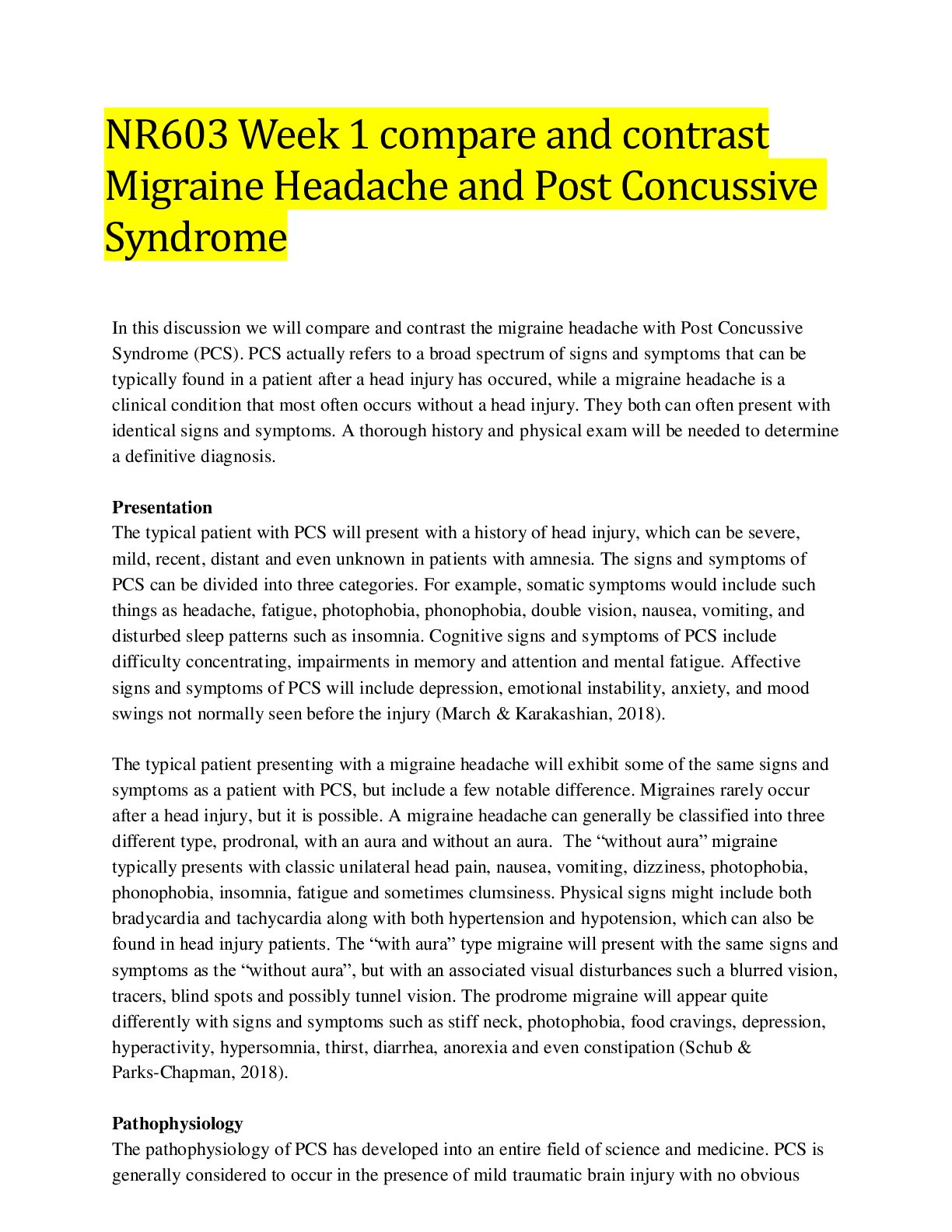
Reviews( 0 )
Document information
Connected school, study & course
About the document
Uploaded On
Apr 18, 2022
Number of pages
5
Written in
Additional information
This document has been written for:
Uploaded
Apr 18, 2022
Downloads
0
Views
65

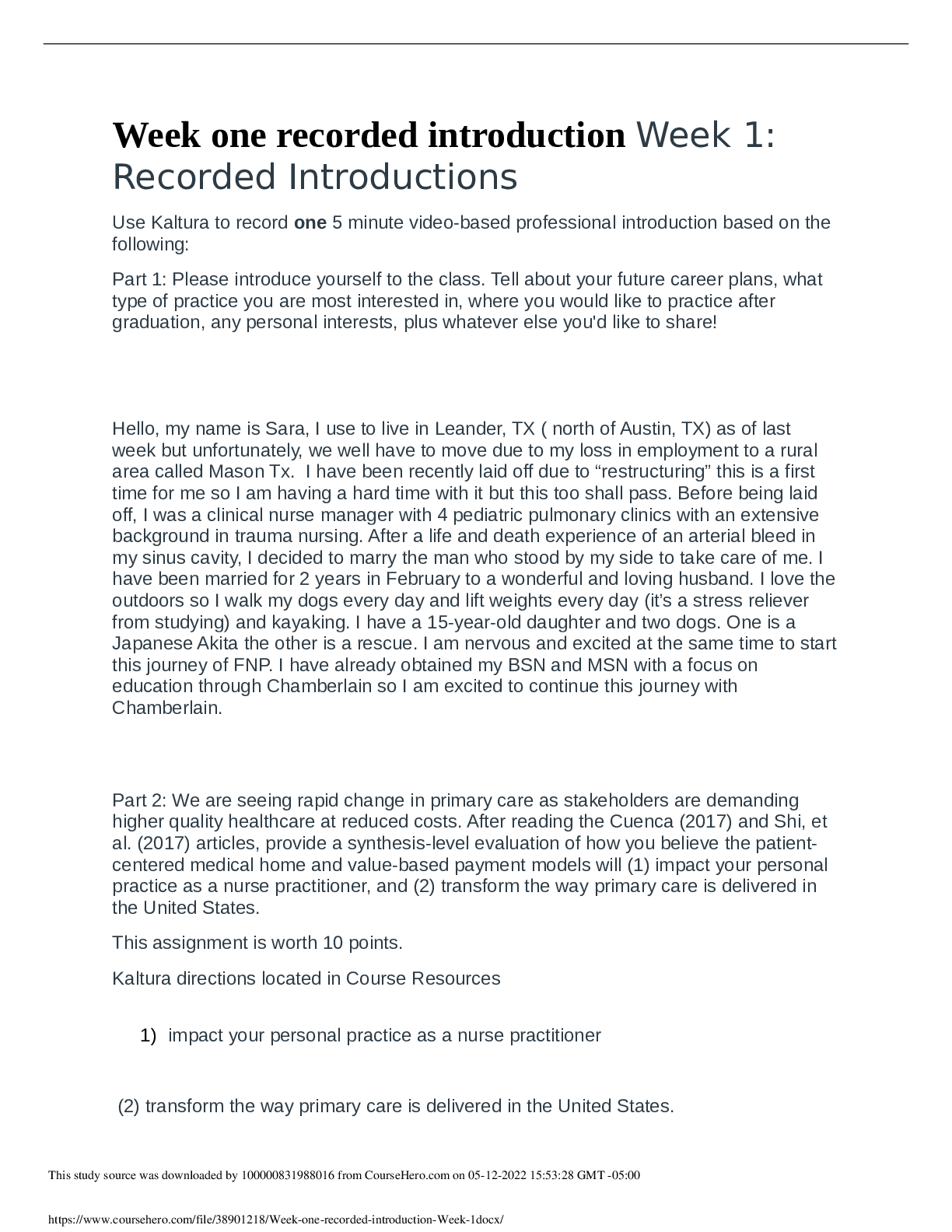


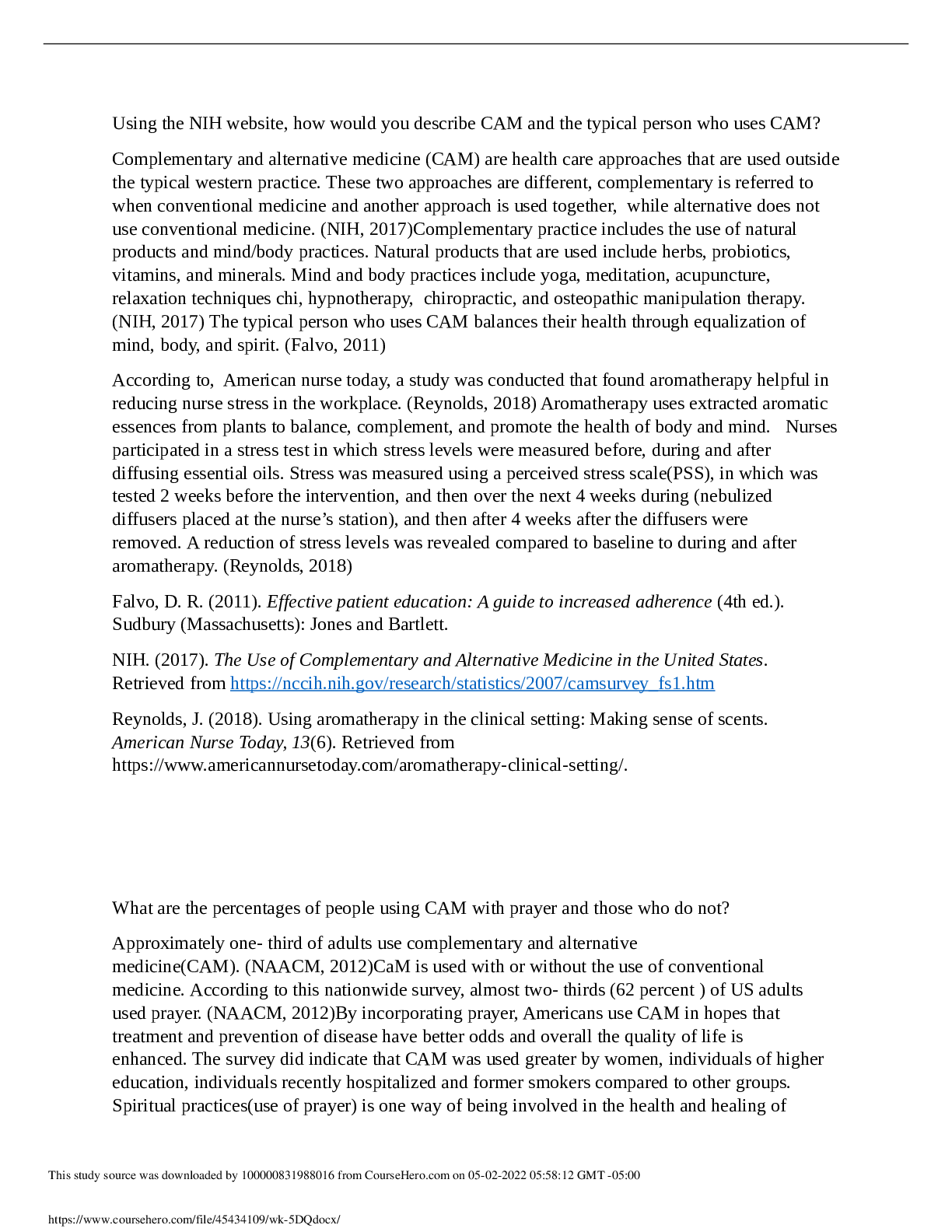

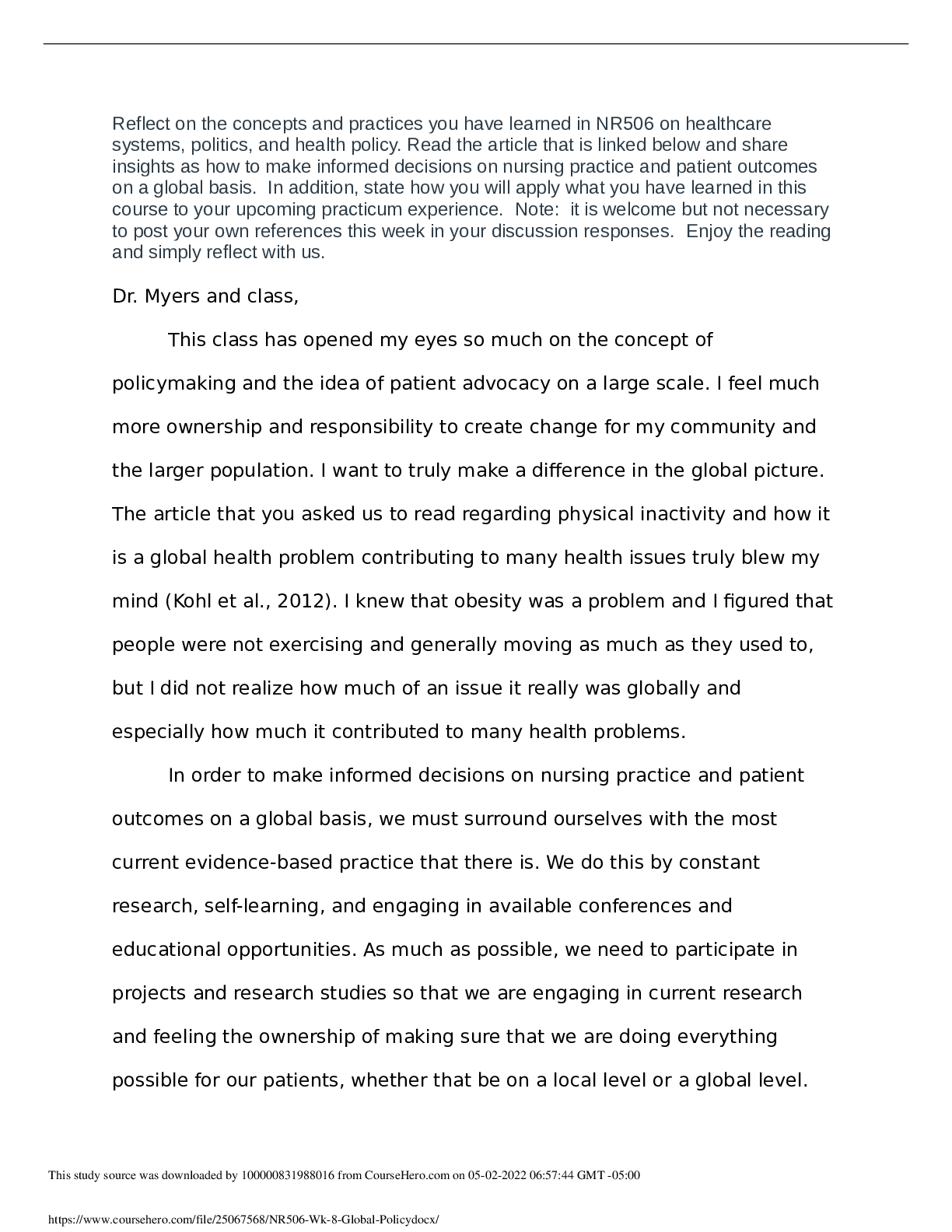
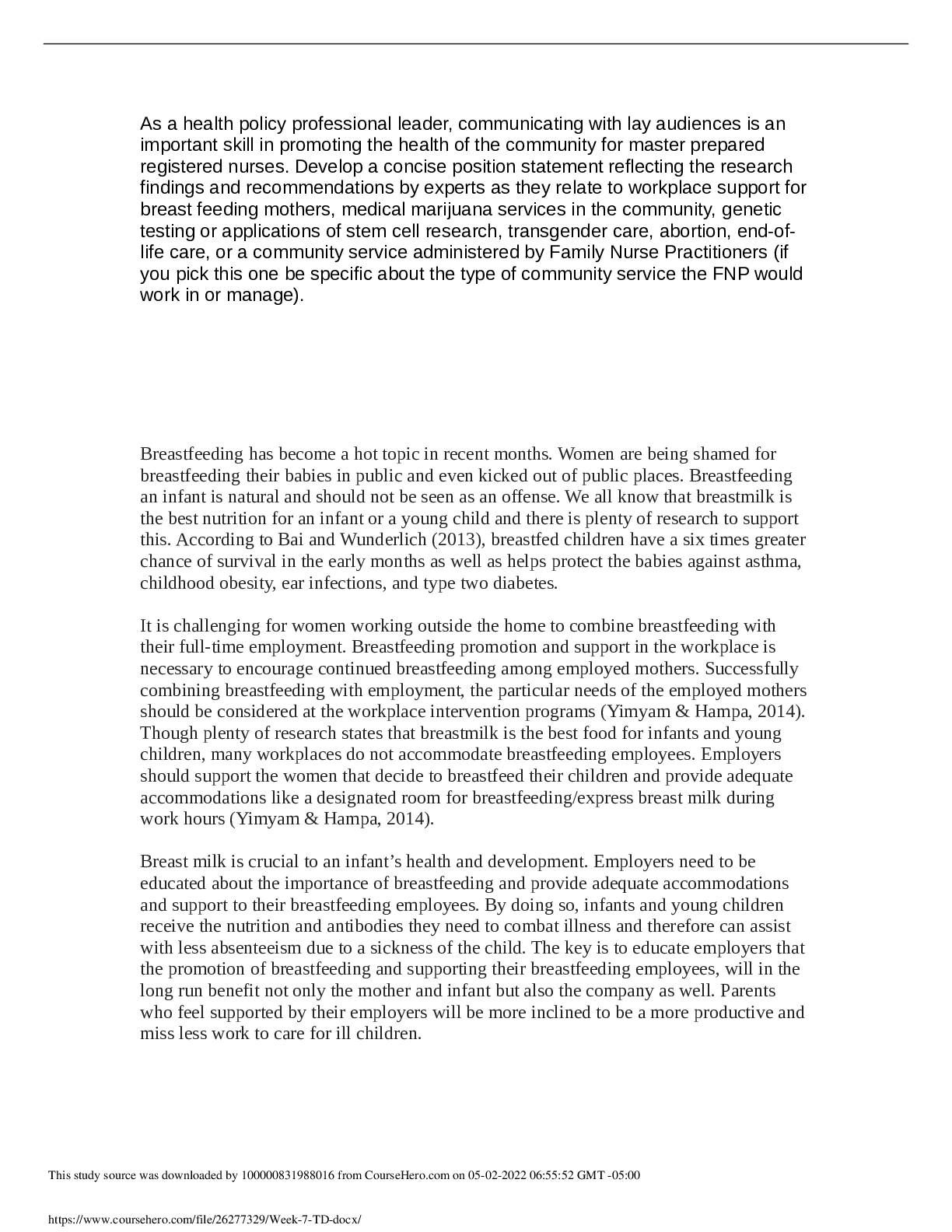
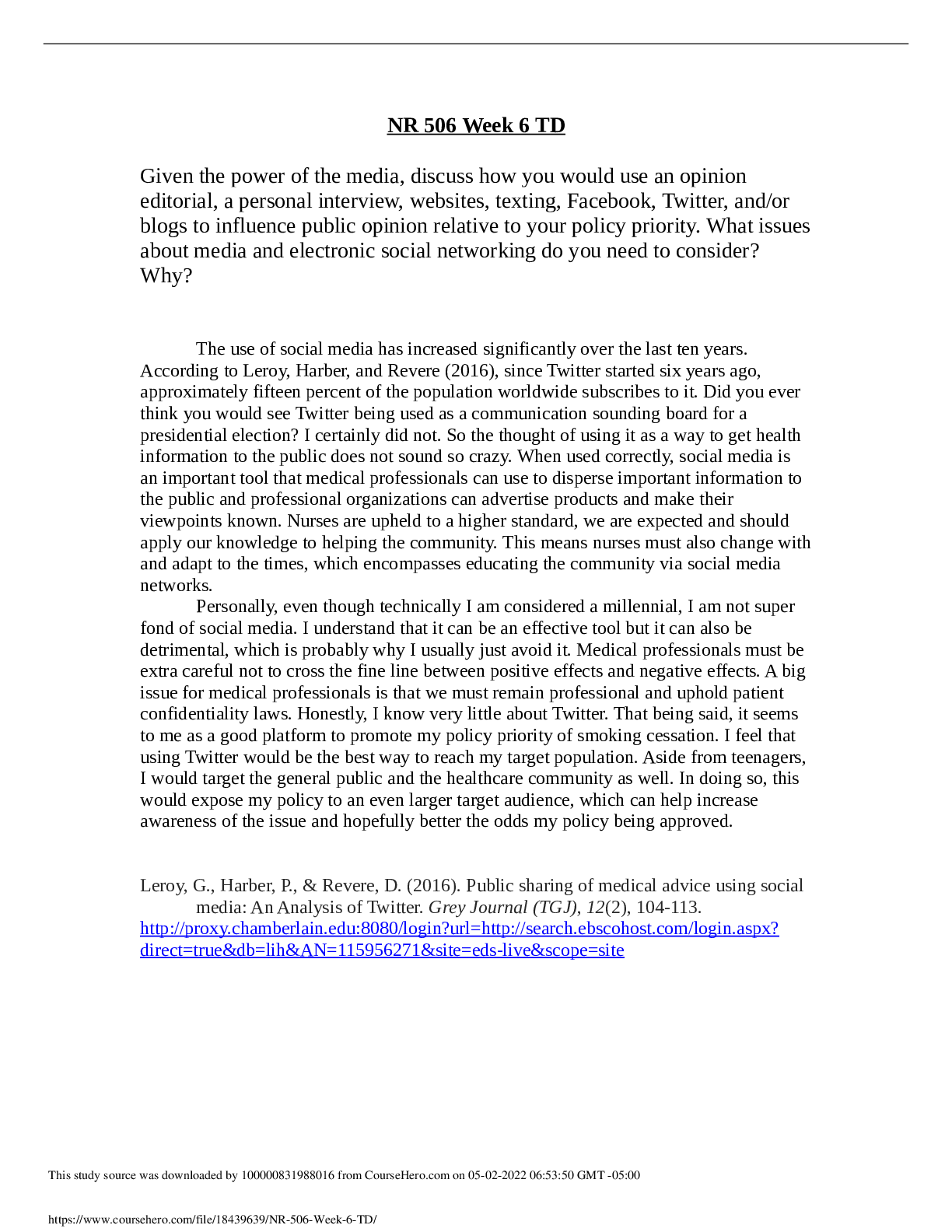
.png)
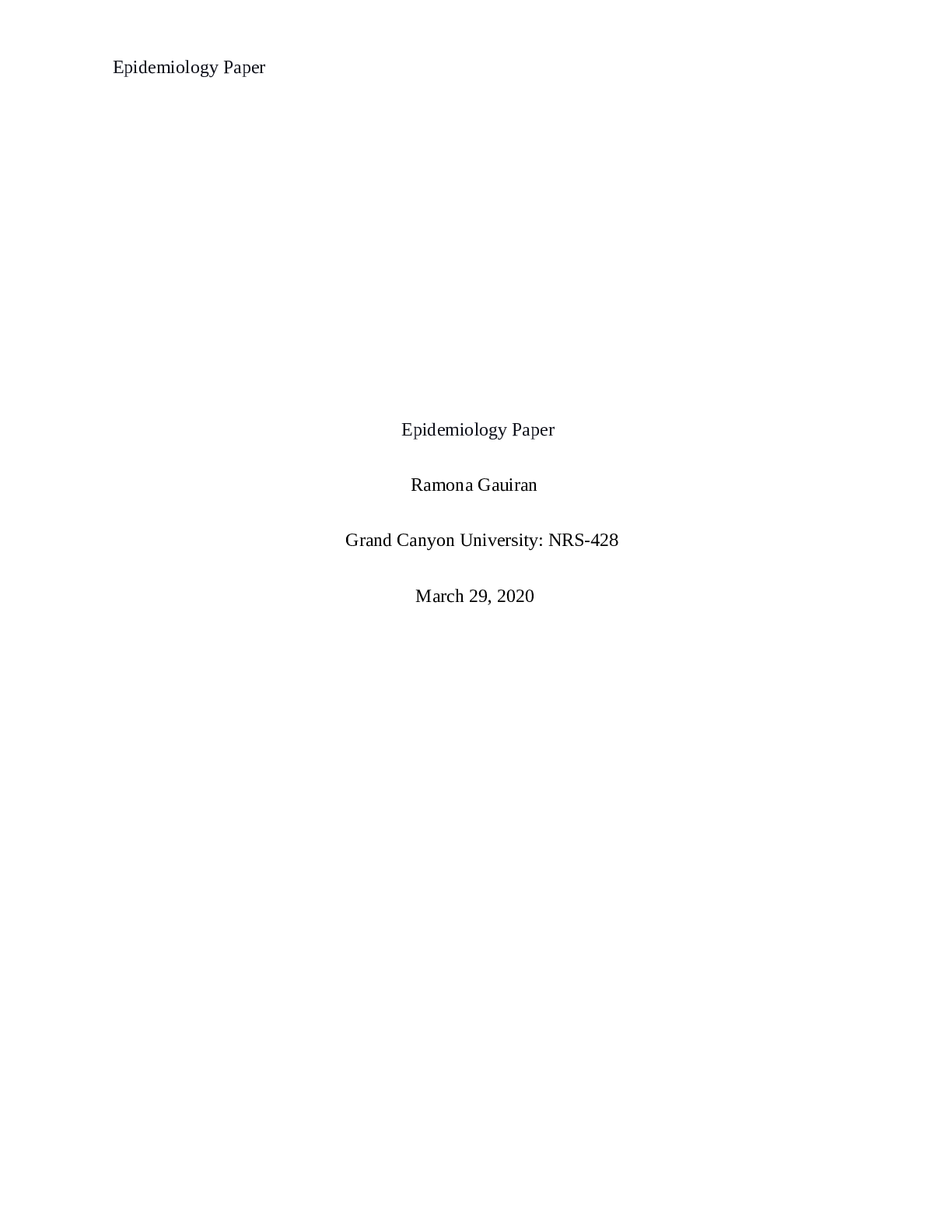
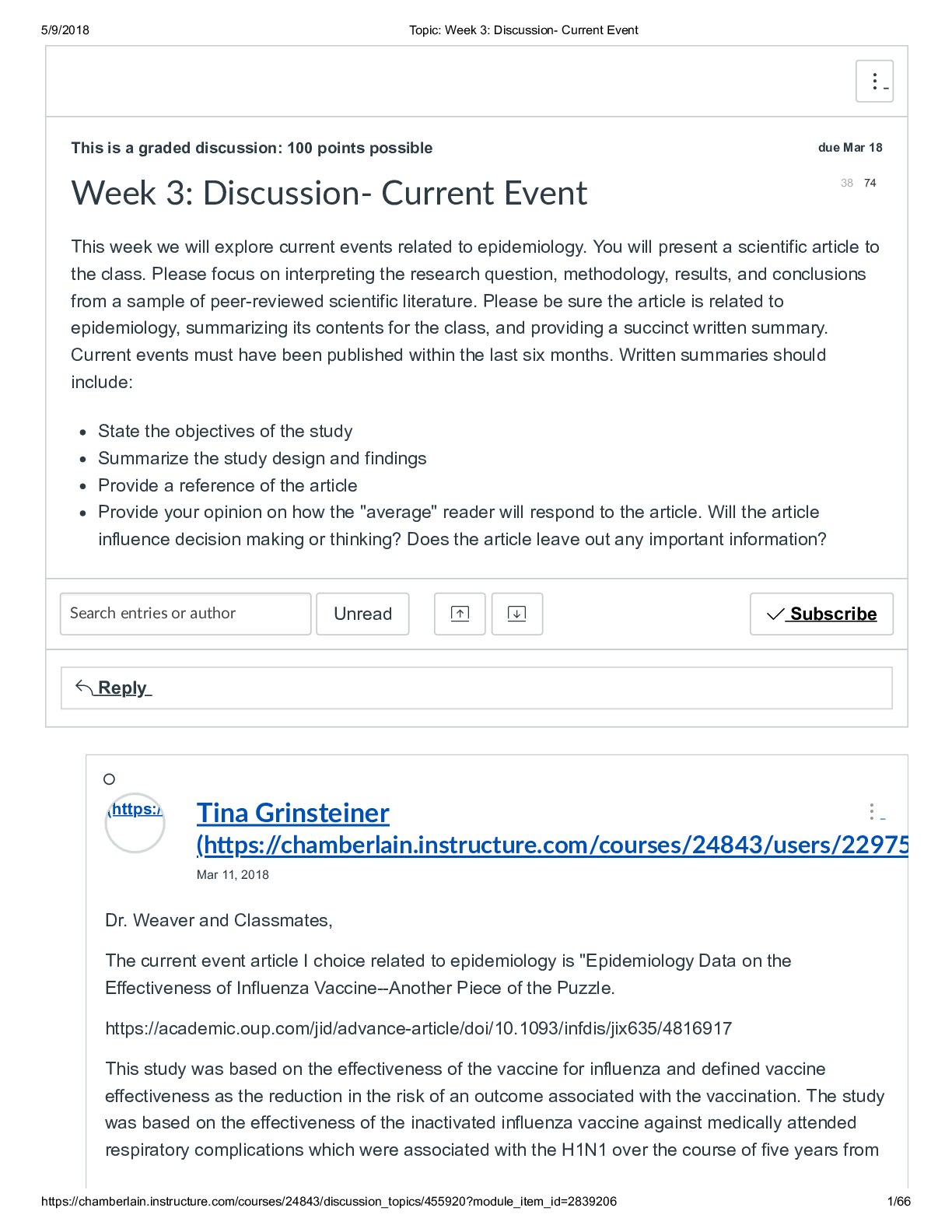

.png)

.png)
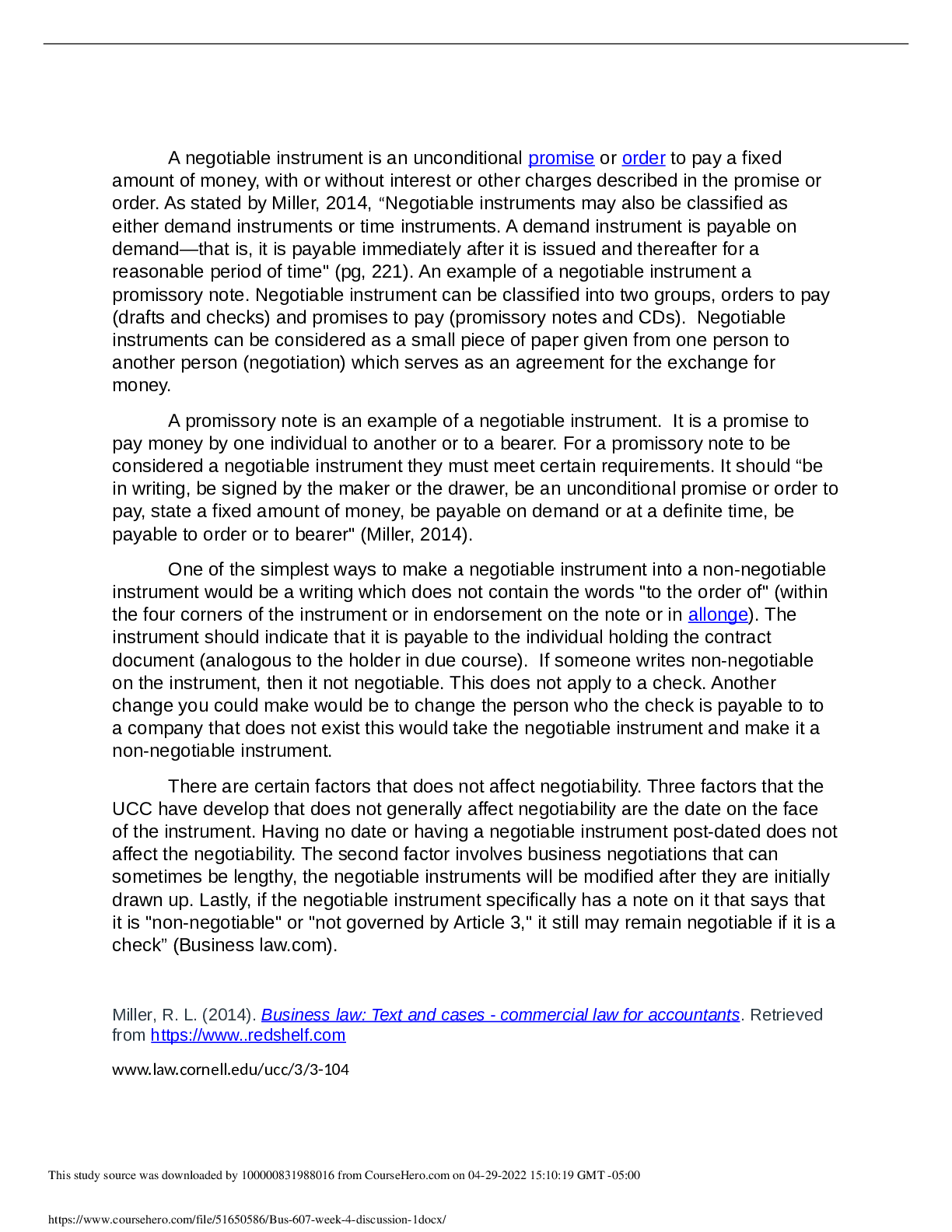

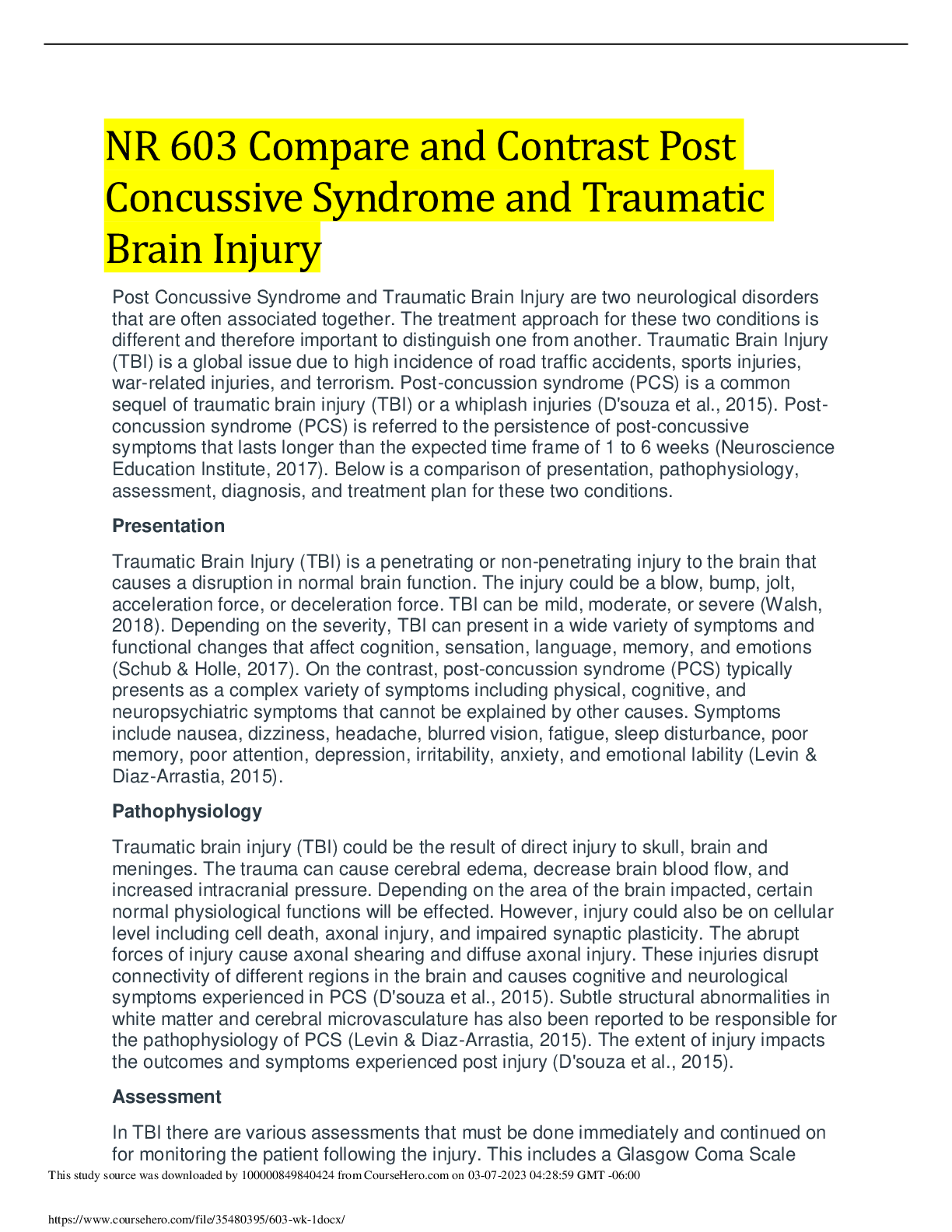
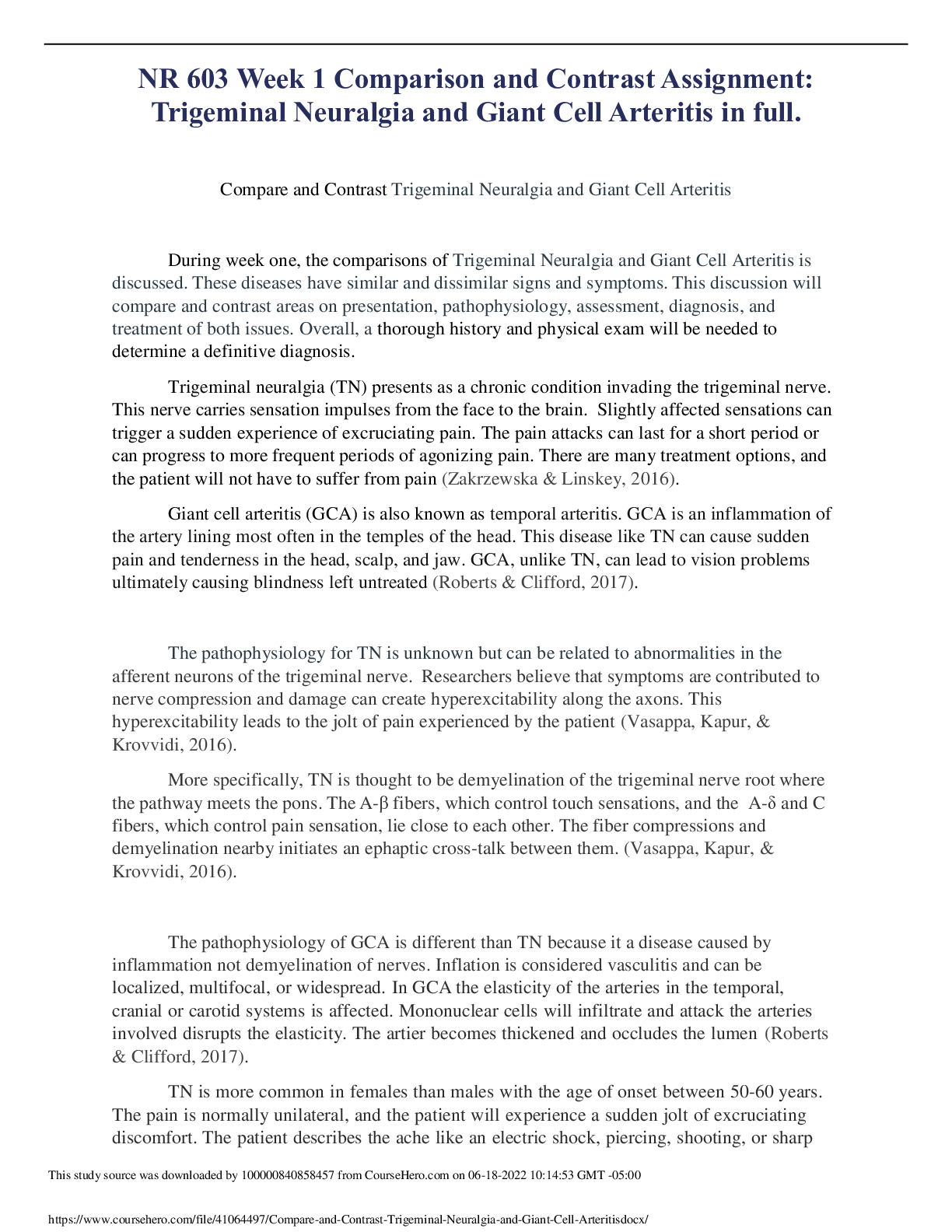

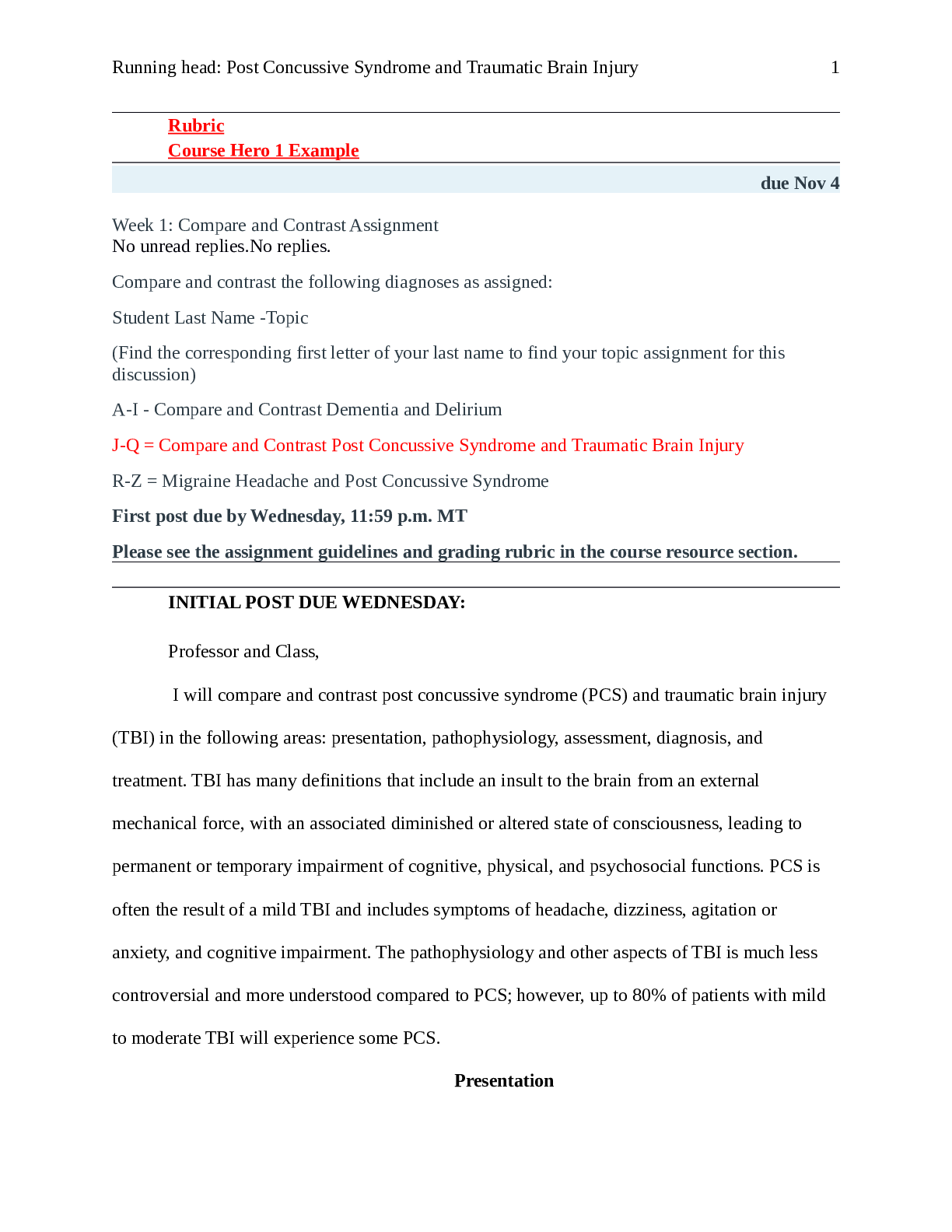
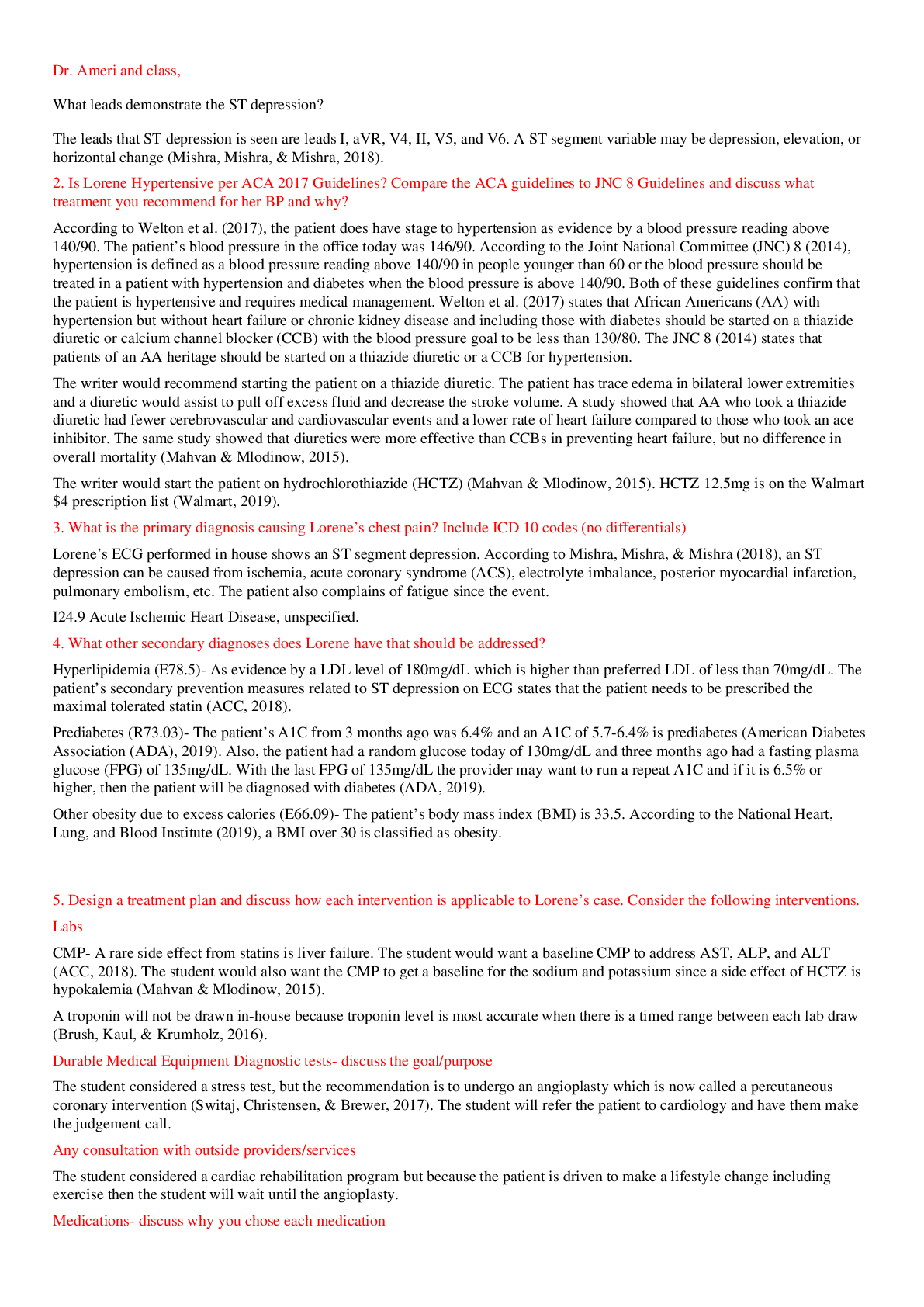

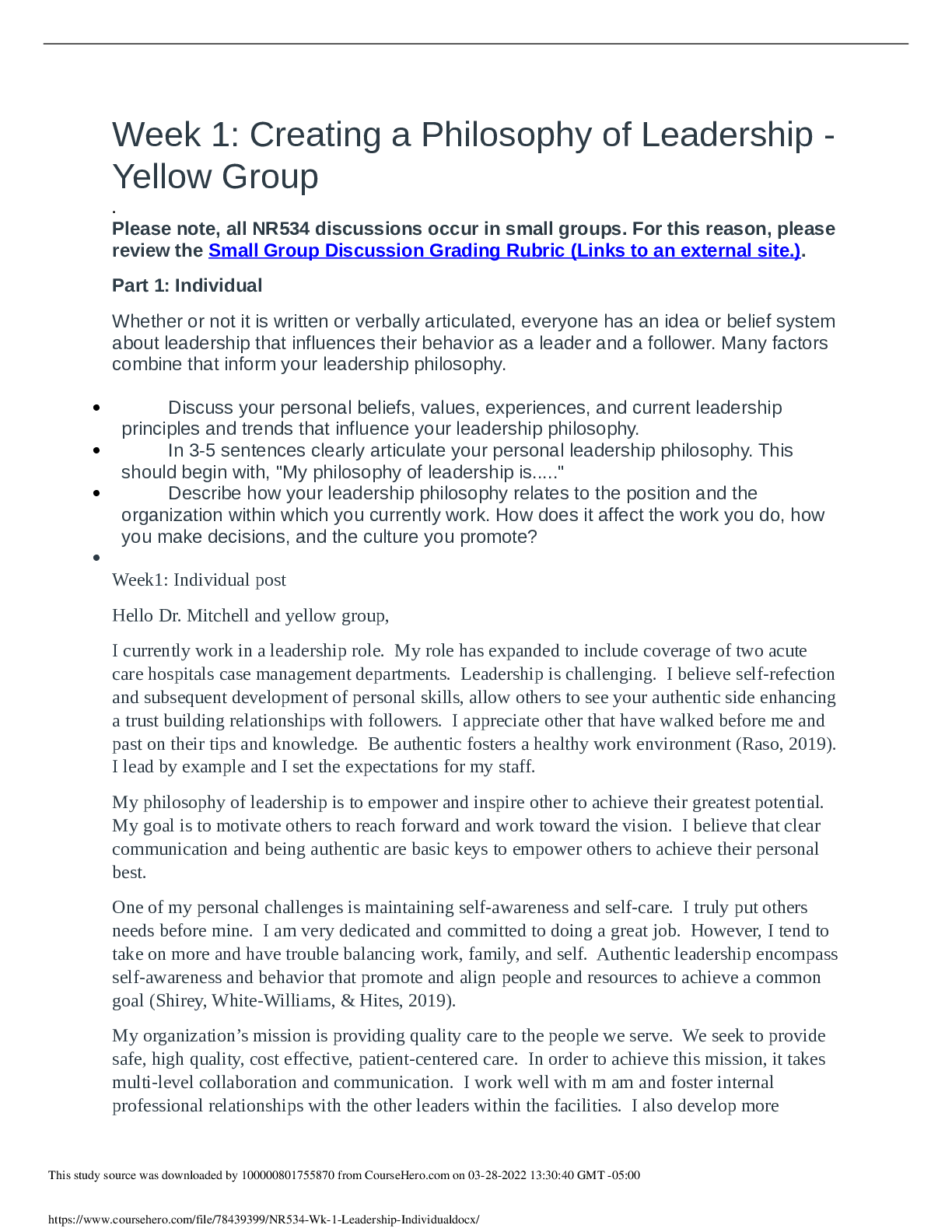
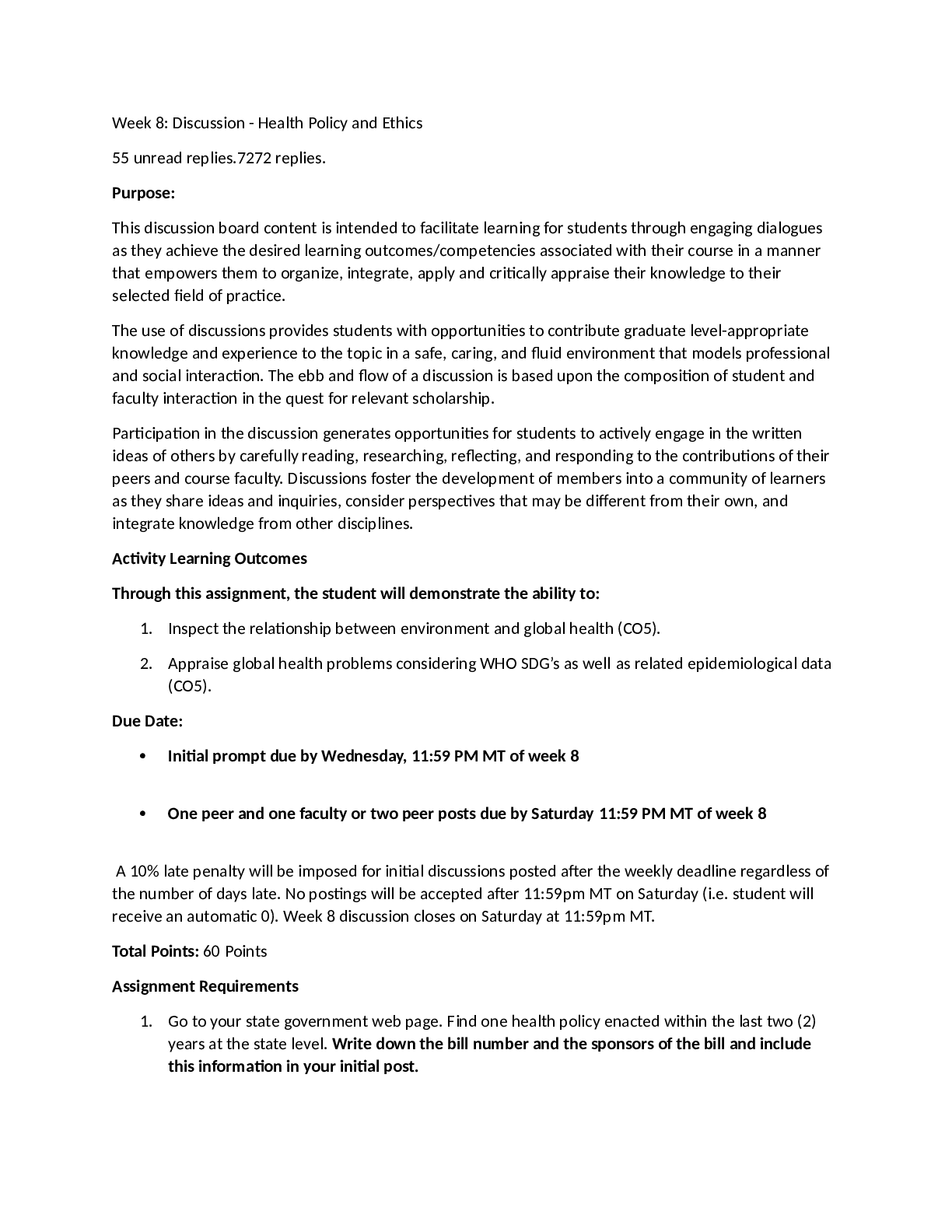
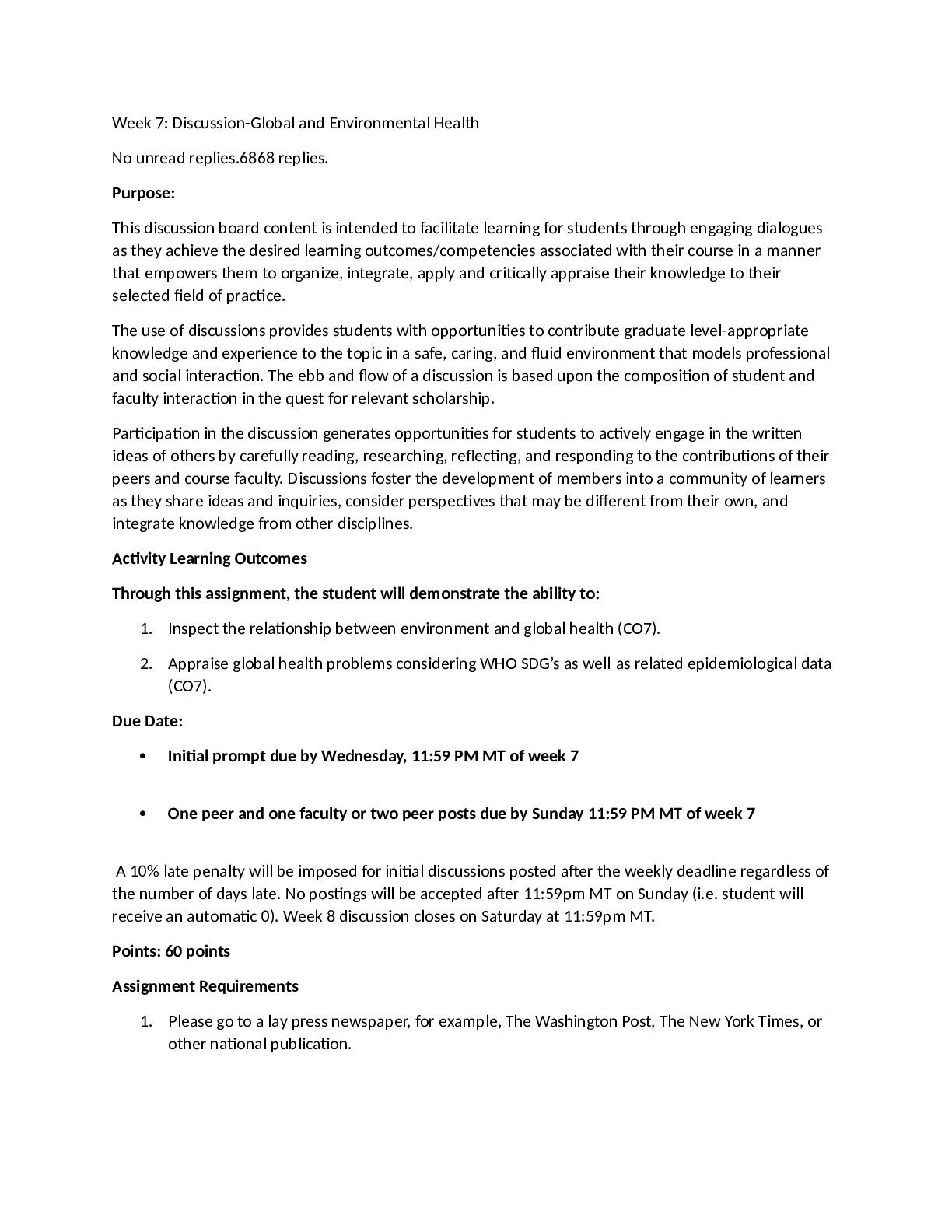

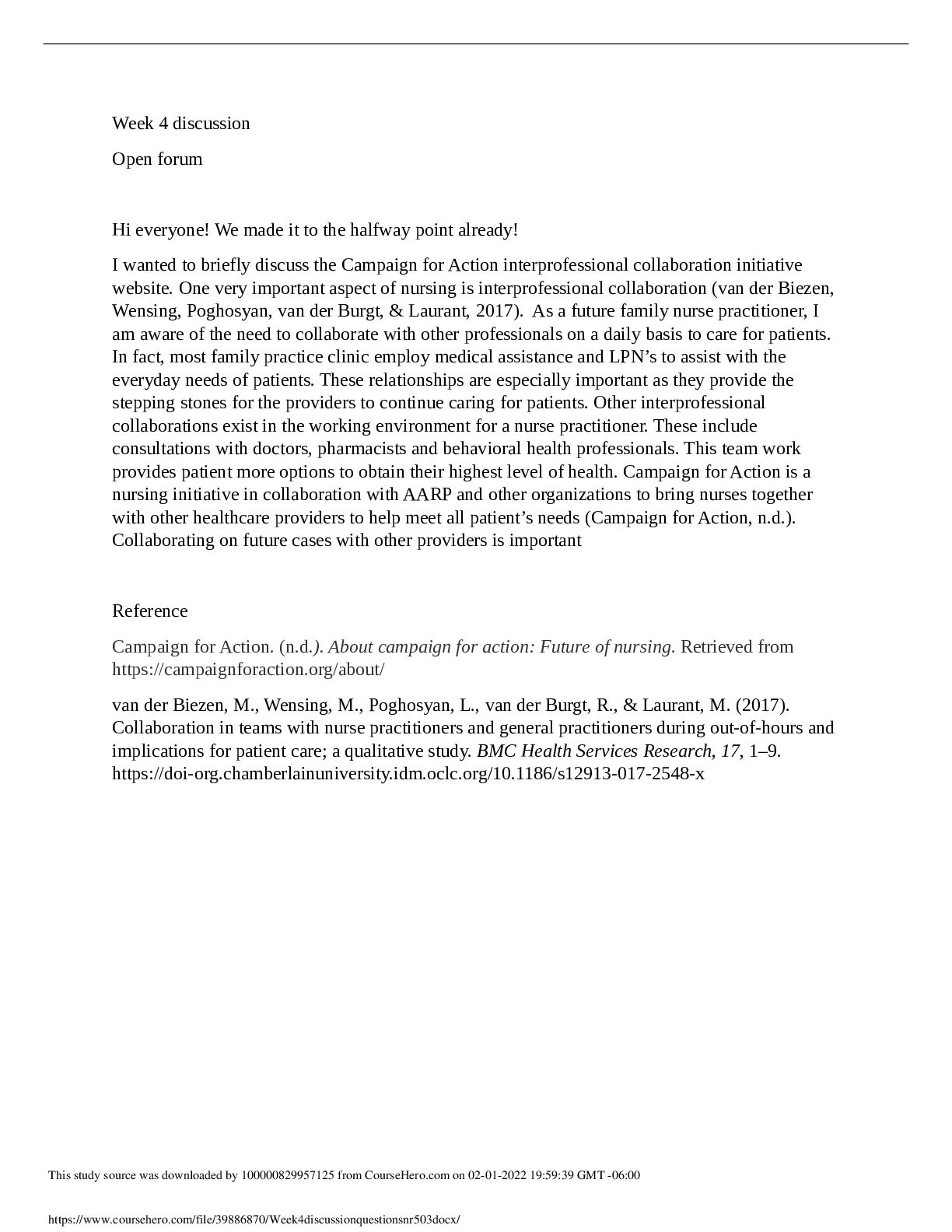

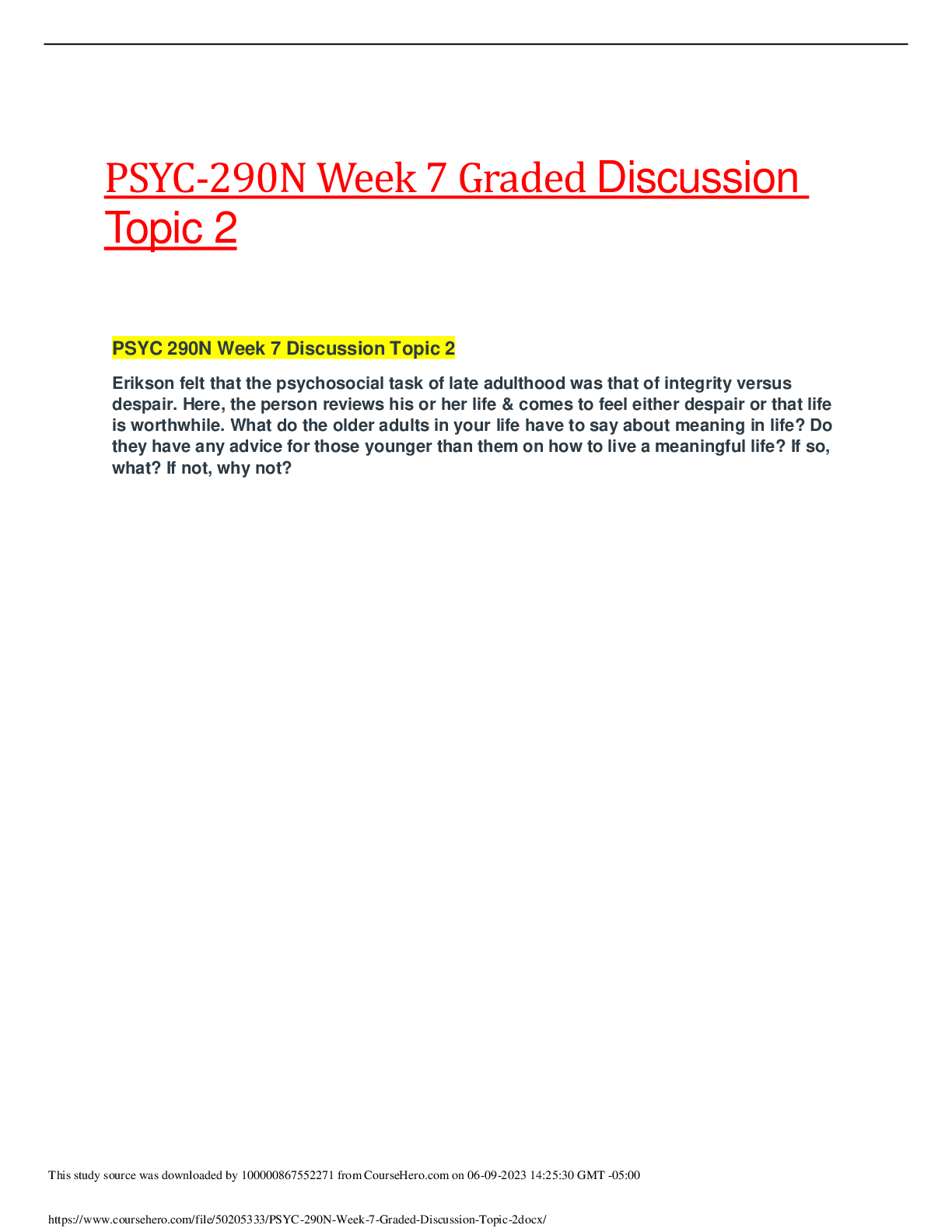
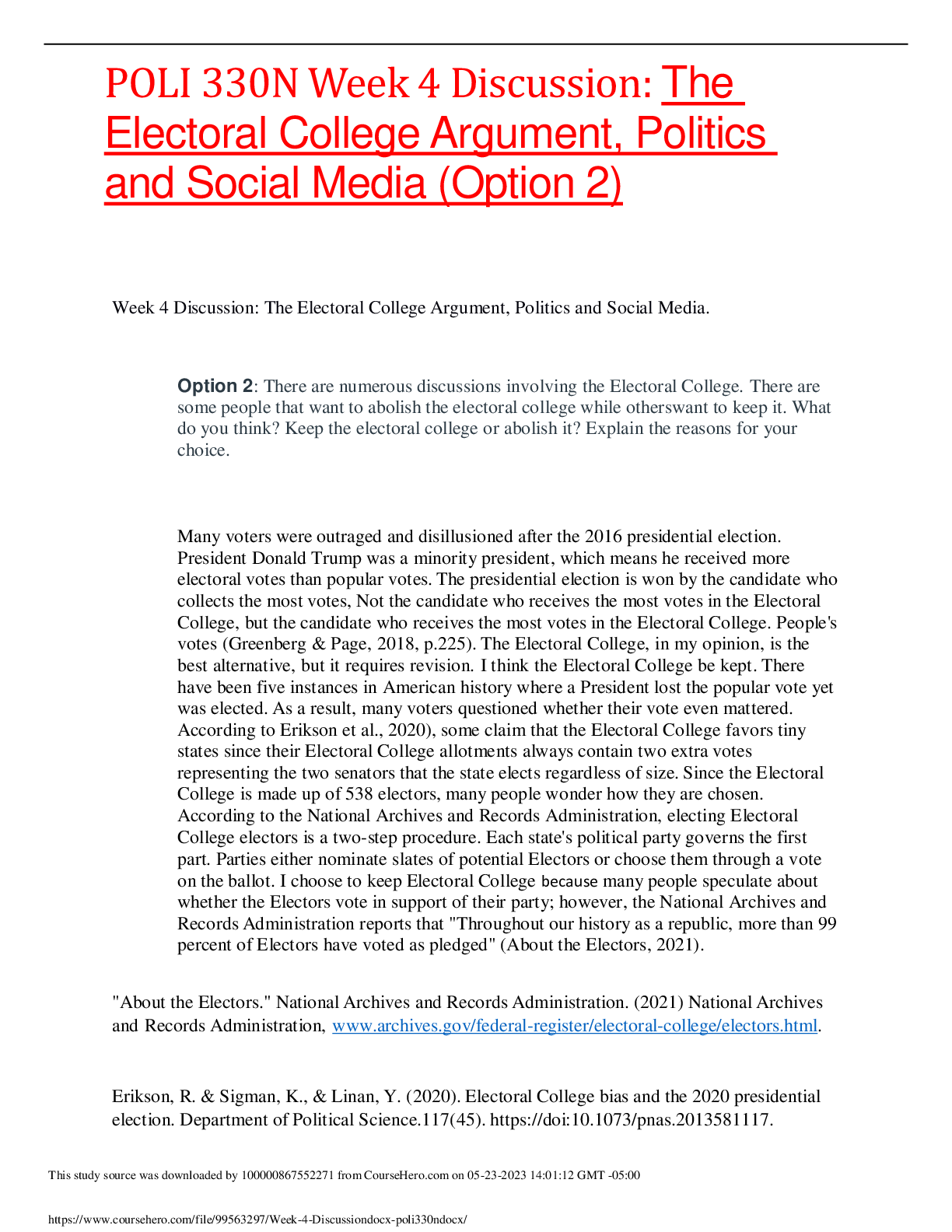
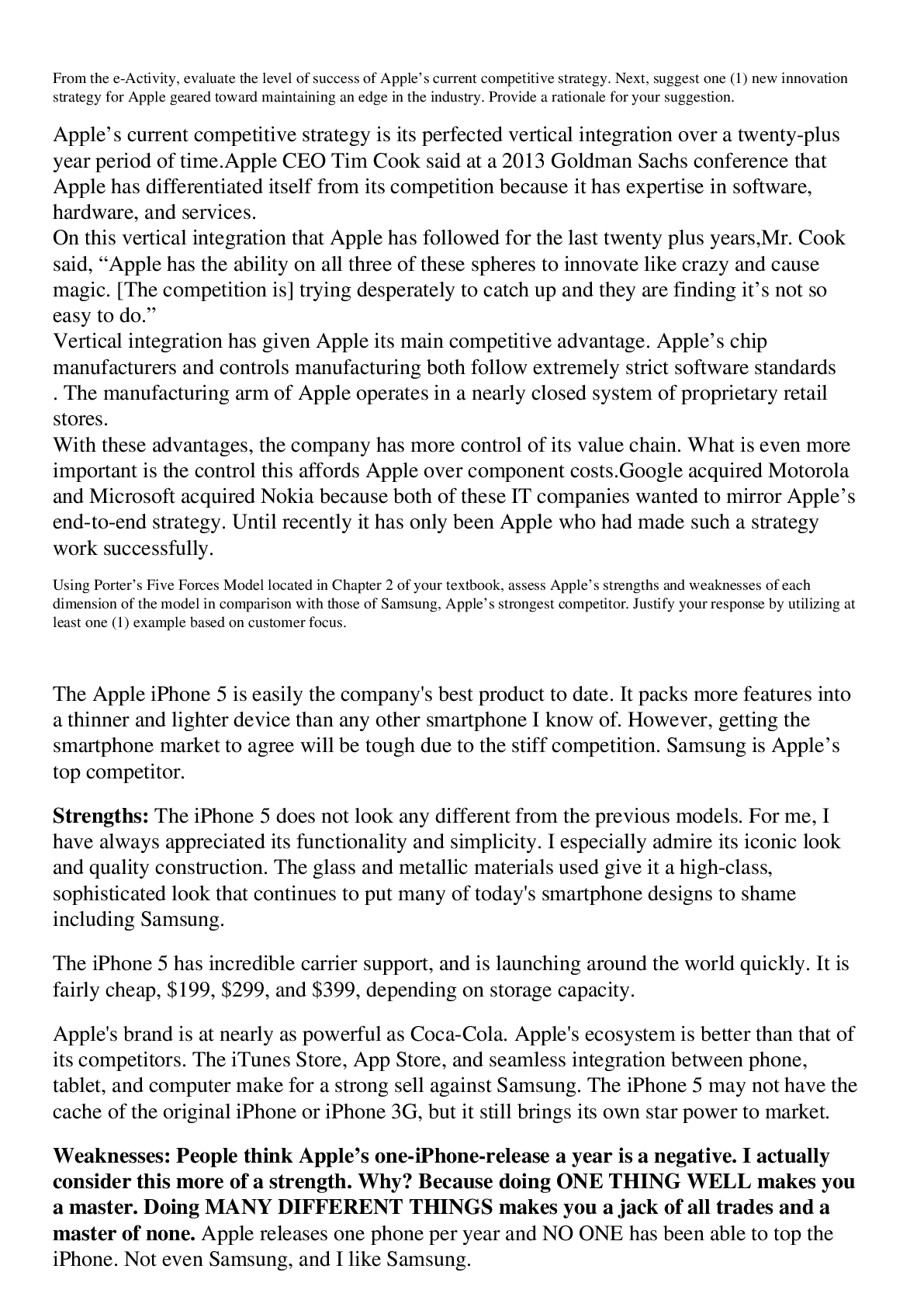
Growth and developmental patterns of toddlers.png)

